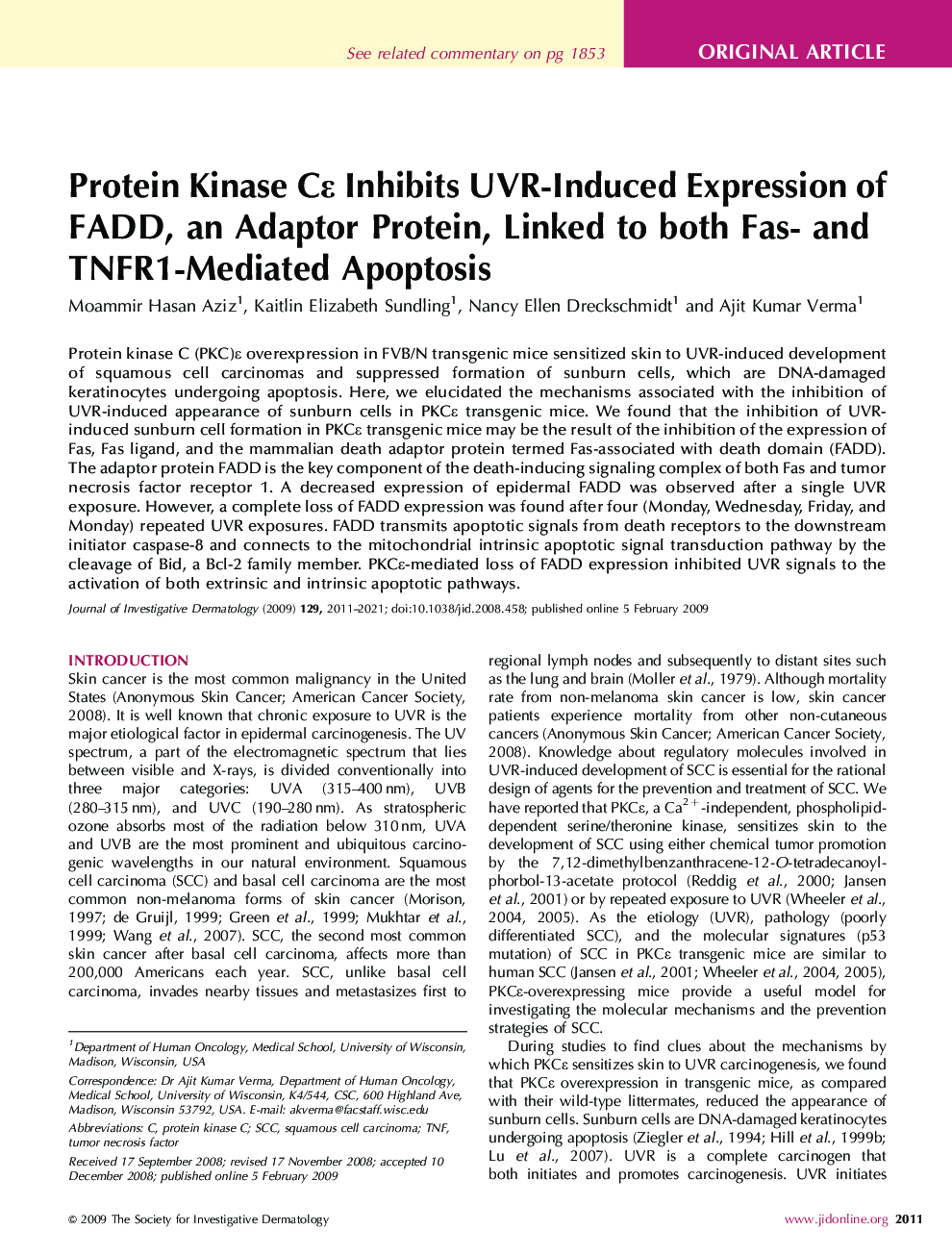| کد مقاله | کد نشریه | سال انتشار | مقاله انگلیسی | نسخه تمام متن |
|---|---|---|---|---|
| 3216842 | 1203583 | 2011 | 11 صفحه PDF | دانلود رایگان |
عنوان انگلیسی مقاله ISI
Protein Kinase Cε Inhibits UVR-Induced Expression of FADD, an Adaptor Protein, Linked to both Fas- and TNFR1-Mediated Apoptosis
دانلود مقاله + سفارش ترجمه
دانلود مقاله ISI انگلیسی
رایگان برای ایرانیان
موضوعات مرتبط
علوم پزشکی و سلامت
پزشکی و دندانپزشکی
امراض پوستی
پیش نمایش صفحه اول مقاله

چکیده انگلیسی
Protein kinase C (PKC)ε overexpression in FVB/N transgenic mice sensitized skin to UVR-induced development of squamous cell carcinomas and suppressed formation of sunburn cells, which are DNA-damaged keratinocytes undergoing apoptosis. Here, we elucidated the mechanisms associated with the inhibition of UVR-induced appearance of sunburn cells in PKCε transgenic mice. We found that the inhibition of UVR-induced sunburn cell formation in PKCε transgenic mice may be the result of the inhibition of the expression of Fas, Fas ligand, and the mammalian death adaptor protein termed Fas-associated with death domain (FADD). The adaptor protein FADD is the key component of the death-inducing signaling complex of both Fas and tumor necrosis factor receptor 1. A decreased expression of epidermal FADD was observed after a single UVR exposure. However, a complete loss of FADD expression was found after four (Monday, Wednesday, Friday, and Monday) repeated UVR exposures. FADD transmits apoptotic signals from death receptors to the downstream initiator caspase-8 and connects to the mitochondrial intrinsic apoptotic signal transduction pathway by the cleavage of Bid, a Bcl-2 family member. PKCε-mediated loss of FADD expression inhibited UVR signals to the activation of both extrinsic and intrinsic apoptotic pathways.
ناشر
Database: Elsevier - ScienceDirect (ساینس دایرکت)
Journal: Journal of Investigative Dermatology - Volume 129, Issue 8, August 2009, Pages 2011-2021
Journal: Journal of Investigative Dermatology - Volume 129, Issue 8, August 2009, Pages 2011-2021
نویسندگان
Moammir Hasan Aziz, Kaitlin Elizabeth Sundling, Nancy Ellen Dreckschmidt, Ajit Kumar Verma,